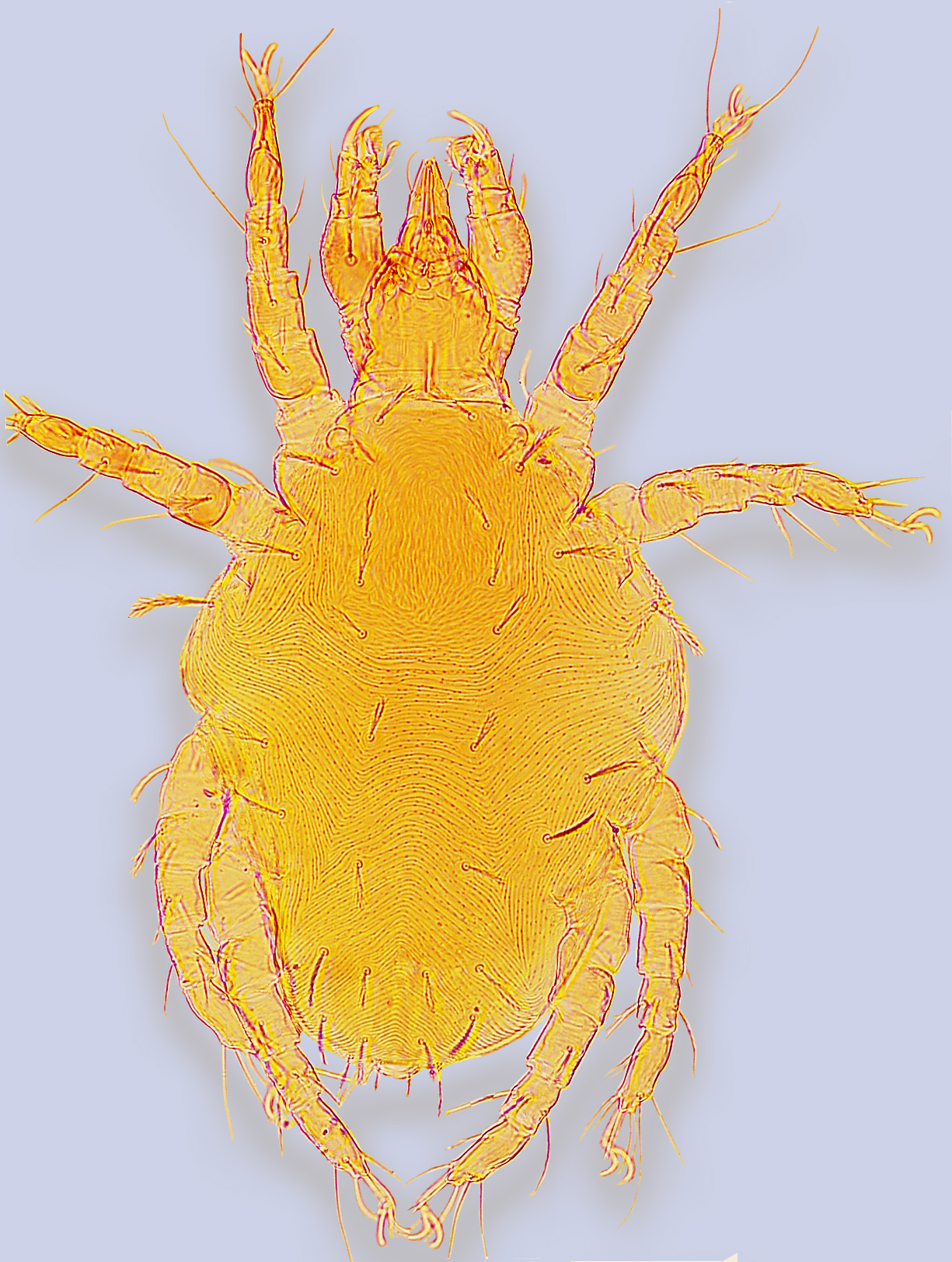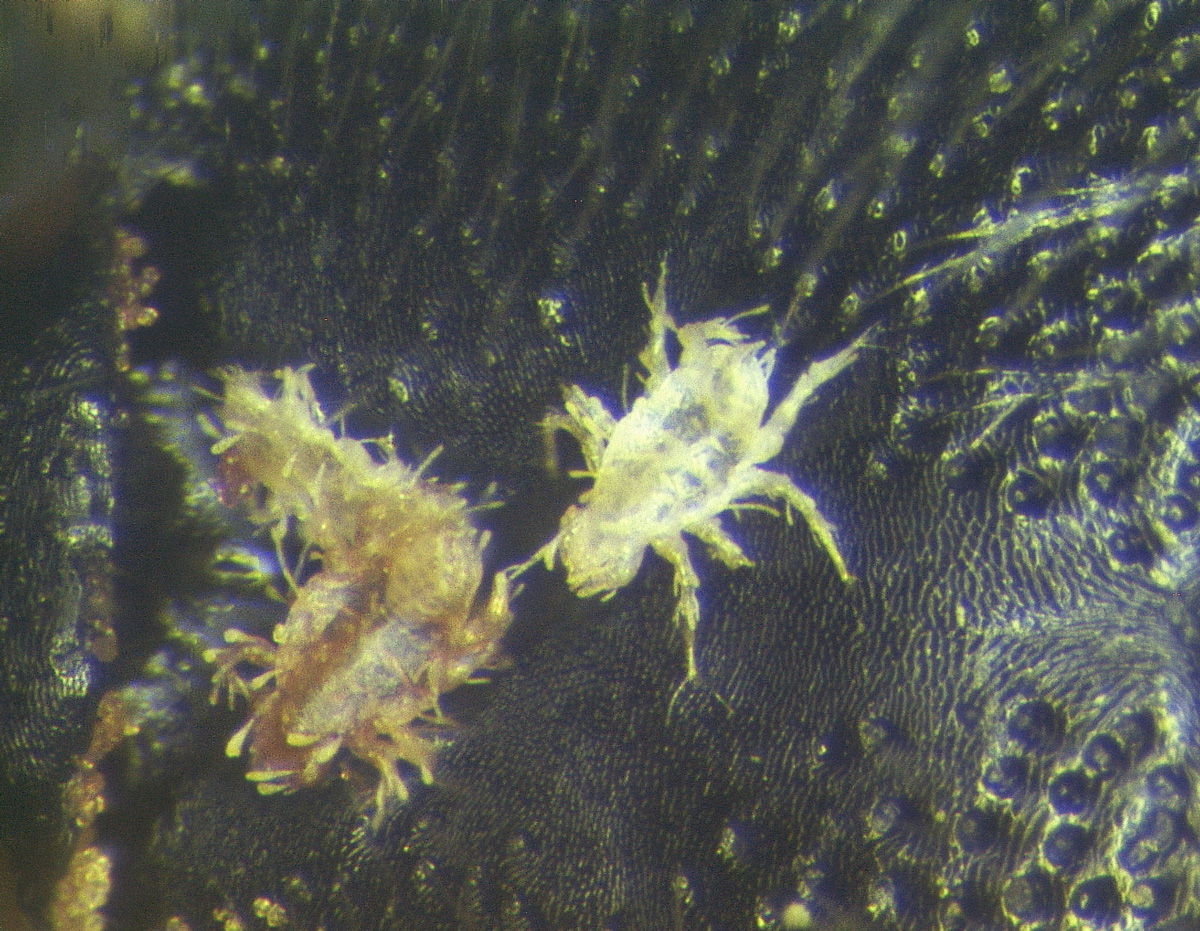Acaropsella sp. (
Apis mellifera, Czech Republic)
Acaropsis sollers Kuzin, 1940 (
Apis mellifera, Czech Republic, Kyrgyzstan)
Bak furcatus Gerson and Fain, 1991 (
Apis cerana, Tailand, Philippines)
Cheletomimus bregetovae (Volgin, 1969) (
Apis cerana, Philippines)
Cheletomorpha lepidopterorum (Shaw, 1794) (
Apis mellifera, Germany, Russia)
Cheletophyes apicola Fain, Lukoschus and Nadchatram, 1980 (
Xylocopa latipes,
Xylocopa pentachroma, Malaysia, Celebes, Philippines)
Cheletophyes clavipilis Fain, Lukoschus et Nadchatram, 1980 (
Xylocopa latipes, Malaysia)
Cheletophyes decorus Bochkov and Klimov, 2004 (
Xylocopa tranquebarica (Fabricius, 1804), Vietnam)
Cheletophyes eckerti Summers and Price, 1970 (probable synonyms:
Ch. harnaji Putatunda & Kapil, 1988;
Ch. haryanaensis Putatunda & Kapil, 1988;
Ch. newtoni Putatunda & Kapil, 1988;
Ch. orientalis Putatunda & Kapil, 1988;
Ch. ruttneri Putatunda & Kapil, 1988;
Ch. shendei Putatunda & Kapil, 1988) (
Xylocopa aestuansIndia (
Xylocopa imitatortera in Angola, bees in Congo, and
Bembix ugandensis in Congo after Fain & Bochkov, 2001))
Cheletophyes indiacus Smiley and Whitaker, 1981 (=
Ch. xylocopae Ramaraju et Mohanasundaram, 1999) (
Xylocopa sp, India)
Cheletophyes mbomba Bochkov, Klimov and OConnor, 2006 (
Xylocopa torrida, Africa)
Cheletophyes occisor Bochkov and Klimov, 2004 (
Xylocopa aruana, Papua New Guinea)
Cheletophyes panamensis Klompen, Méndez and Lukoschus, 1984 (
Xylocopa frontalis, Costa Rica, Panama)
Cheletophyes sp. (
Xylocopa, Australia)
Cheletophyes torridae Bochkov, Klimov and OConnor, 2006 (
Xylocopa torrida, Africa)
Cheletophyes venator (Vitzthum, 1920) (=
Ch. aurorae Haitlinger 2000) (
Xylocopa nigrita, Africa)
Cheletophyes vespae Fain and Bochkov, 2001 (
Vespa tropica (accidental host, should be associated with
Xylocopa), Malaysia)
Cheletophyes vitzthumi Oudemans, 1914 (
Xylocopa caffra, South Africa)
Cheyletus carnifex Zachvatkin, 1935 (
Apis mellifera, Czech Republic)
Cheyletus eruditus Schrank, 1781 (
Apis mellifera,
Bombus, Czech Republic, Poland, former USSR, India, New Zealand)
Cheyletus malaccensis Oudemans, 1903 (
Apis, India)
Eucheyletia bakeri Volgin, 1963 (
Bombus, USA)
Eucheyletia flabellifera (Michael, 1878) (
Apis mellifera, Czech Republic)
Nodele (Aztecocheyletus) conquistador Bochkov and Klimov, 2004 (
Aztecanthidium tenochtitlanicum, Mexico)
(Banaszak 1980, Bochkov and Klimov 2004, Chmielewski 1972, Chmielewski 1991, Corpuz-Raros 1988, Corpuz-Raros 2000, Fain and Bochkov 2001a, Gerson and Fain 1991, Grobov 1975, Haragsim et al. 1978, Homann 1933, Klimov et al. 2006, Klompen et al. 1984, Kumar and Kumar 1995, Macfarlane 2005, Malabanan and Corpuz-Raros 1998, Tomaszewska 1988, Walter et al. 2002)



